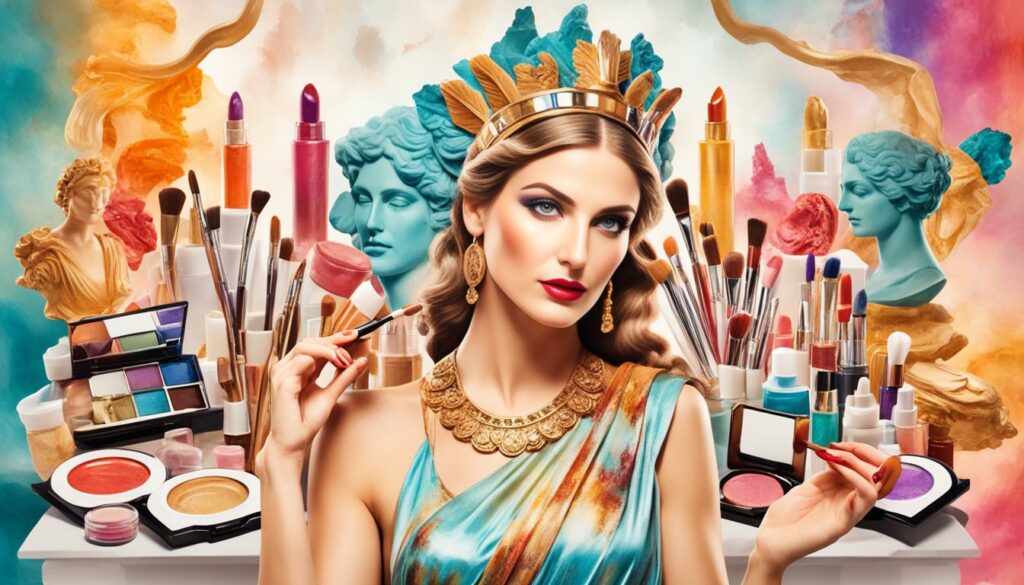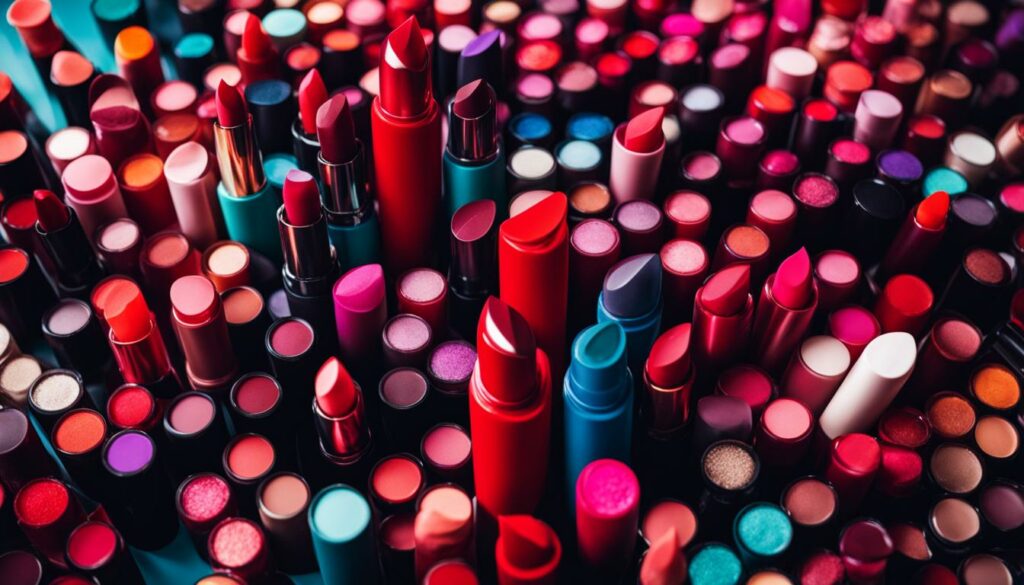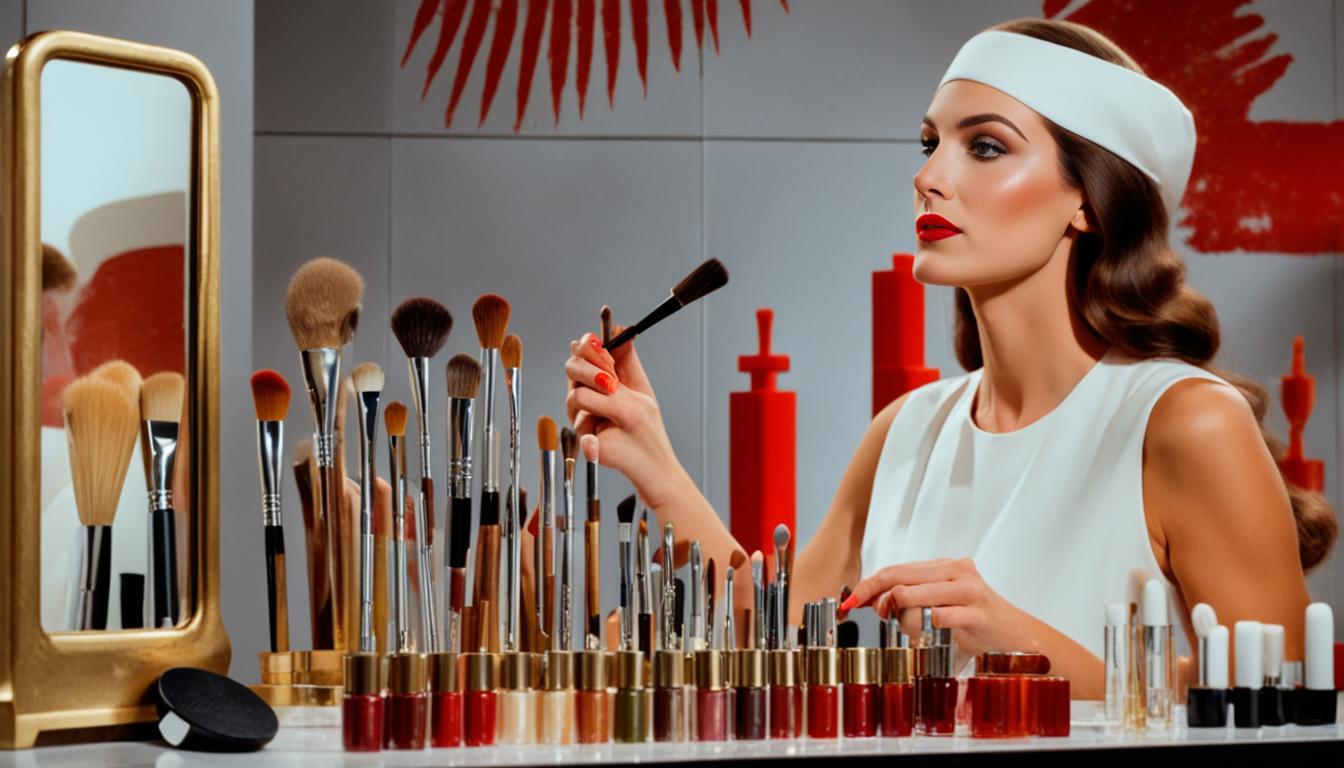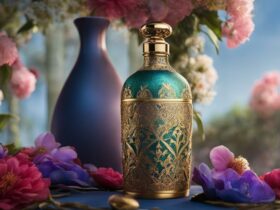Lipstick, an iconic cosmetic product, has a captivating history that spans thousands of years. From its humble beginnings in ancient civilizations to its symbol of empowerment and self-expression in modern times, lipstick has stood the test of time. In this article, we will explore the fascinating origins of lipstick and why it was invented.
Key Takeaways:
- Lipstick has a long and diverse history, dating back to ancient civilizations.
- Ancient cultures such as Ur and Egypt used lipstick for various purposes.
- In ancient Greece and Rome, lipstick had different societal connotations and ingredients.
- Religious beliefs and safety concerns influenced perceptions of lipstick in the Middle Ages and the Victorian era.
- Lipstick has also been a symbol of empowerment, rebellion, and self-expression throughout history.
Ancient Origins of Lipstick
The history of lipstick can be traced back to ancient civilizations, where the use of lip color was prevalent and significant. Let’s explore the ancient origins of lipstick and its cultural importance in ancient societies.
Around 3500 BCE, the first known lipstick was created. Queen Schub-ad of ancient Ur in Mesopotamia (now Iraq) was known to wear lip tint made from a mixture of “white lead and crushed red rocks.” The popularity of lipstick in ancient Ur was such that individuals were often buried with containers of it, highlighting its significance.
In ancient Egypt, both men and women adorned themselves with makeup, including lipstick. The vibrant hues were achieved using red ochre, either alone or mixed with resin or gum. Lipstick became a symbol of prestige and distinction, with the wealthy being buried with pots of lip color to showcase their social status.
Image:
| Ancient Ur | Ancient Egypt |
|---|---|
| Queen Schub-ad wore lip tint made from “white lead and crushed red rocks.” | Red ochre, mixed with resin or gum, was used to achieve vibrant lip colors. |
| Lipstick was popular in ancient Ur, and people were often buried with containers of it. | Lipstick was a symbol of prestige and distinction, with the wealthy being buried with pots of lip color. |
The ancient origins of lipstick in Ur and Egypt reveal the early fascination with lip color and its cultural significance. Lipstick played a vital role in ancient societies, highlighting social status, beauty, and personal expression. The tradition of lip color has evolved over time, shaping the modern perception and diverse uses of lipstick.
Lipstick in Greece and Rome
In ancient Greece, the use of lipstick shifted, and it was mainly worn by sex workers. Lipstick colors were achieved through dyes, wine, and unconventional ingredients such as sheep sweat, human saliva, and crocodile excrement. Lipstick regulations were introduced not for safety reasons but to uphold class divides.
In ancient Rome, lipstick regained popularity, with men and wealthy women using it to indicate social standing. However, the ingredients used, such as ochre, iron ore, and fucus plants, were potentially poisonous.
| Ancient Greece | Ancient Rome |
|---|---|
| Worn mainly by sex workers | Indicated social standing |
| Colors achieved through dyes, wine, and unconventional ingredients | Potentially poisonous ingredients such as ochre, iron ore, and fucus plants |
| Lipstick regulations upheld class divides |

The Shift in Perception: Middle Ages to 20th Century
Lipstick usage experienced a significant decline during the Middle Ages, largely due to religious beliefs and societal views. In England, wearing makeup, including lipstick, was often seen as a challenge to God’s workmanship and was associated with witchcraft and immorality. As a result, laws were passed to discourage the use of lipstick and other cosmetics.
The negative perception of lipstick persisted into the Victorian era. During this time, wearing lipstick was considered impolite and inappropriate for respectable women. However, women found alternative ways to achieve lip color and enhance their beauty. Lip biting, using red ribbons, and participating in underground lip rouge societies became popular methods to attain a hint of color without directly applying lipstick.
In the 20th century, safety regulations surrounding lipstick ingredients also played a significant role in shaping its perception and use. Prior to the introduction of safety standards, lipstick formulations often contained harmful substances such as mercury-laden vermilion. However, with the enactment of the Food, Drug, and Cosmetics Act in 1938, cosmetic products, including lipstick, became subject to stricter safety regulations.
The decline of lipstick in the Middle Ages due to religious views, the shift in Victorian societal norms, and the subsequent safety regulations in the 20th century showcase the evolving perception of this cosmetic product throughout history.
| Factors Influencing Lipstick Perception | Description |
|---|---|
| Religious Beliefs | In the Middle Ages, wearing lipstick was associated with challenging God’s workmanship and witchcraft. |
| Societal Norms | In the Victorian era, lipstick was considered impolite and inappropriate, leading women to find alternative methods of achieving lip color. |
| Safety Regulations | The introduction of safety standards in the 20th century aimed to eliminate harmful substances in lipstick formulations, ensuring consumer safety. |
Lipstick as a Symbol of Empowerment and Rebellion
Lipstick goes beyond mere makeup, carrying a profound symbolic meaning of empowerment and rebellion throughout history. It has been a vehicle for personal expression, allowing individuals to showcase their inner strength and confidence. Self-expression through lipstick has long been celebrated as a way to boldly embrace one’s identity.
When we think of bold lipstick shades like red, we often associate them with a sense of power. The vibrant color can invoke feelings of confidence and assertiveness. By choosing to wear such shades, individuals make a statement, showing the world their unapologetic boldness and defiance.
The history of lipstick is intertwined with cultural norms and social status, making it more than just a cosmetic product. Throughout various time periods, lipstick has served as a marker of cultural heritage, social hierarchy, and prevailing beauty standards. The act of wearing lipstick has often challenged societal norms and expectations, allowing individuals to break free from the confines of conventionality.
In times when conforming to societal expectations can feel oppressive, wearing unconventional lipstick shades becomes an act of defiance, resistance, and rebellion. It is a way to reclaim personal freedom and challenge the established norms. Lipstick becomes a symbol of empowerment, signaling a refusal to adhere to restrictive beauty standards and an embrace of individuality.

Throughout history, lipstick has played a vital role in empowering individuals, fostering self-expression, and challenging societal norms. Its historical significance, inextricably tied to notions of boldness and defiance, makes it a powerful tool for those seeking to make a statement and embrace their true selves.
Conclusion
Lipstick has a rich and diverse history, spanning from ancient civilizations to the present day. Its purpose has evolved over time, reflecting cultural, societal, and personal expressions. From its origins in Mesopotamia and Egypt, where it was seen as a symbol of prestige and beauty, to its association with rebellion and empowerment in ancient Greece and Rome, lipstick has always held significant meaning.
Throughout different time periods, lipstick has symbolized power, with individuals using it to make bold statements and defy societal norms. It has also been a tool for self-esteem, allowing people to express their individuality and boost their confidence. Today, lipstick continues to be a popular cosmetic choice, with various shades and finishes catering to different tastes and styles.
Whether it’s a classic red lip, a subtle nude shade, or an avant-garde color, lipstick remains an iconic product that represents personal identity and embraces the diverse meanings attached to it. It is a timeless symbol of beauty and self-expression, showcasing the historical significance and cultural significance of this beloved cosmetic item.
FAQ
Why was lipstick invented?
Lipstick was invented for various reasons, including cultural significance, personal expression, and social status. Throughout history, lipstick has been used to symbolize power, prestige, and individuality.
What are the ancient origins of lipstick?
The first known lipstick was used in ancient civilizations such as Ur and Egypt. Queen Schub-ad of ancient Ur wore lip tint made from a mix of “white lead and crushed red rocks,” while in ancient Egypt, both men and women used lipstick made from red ochre.
What was the perception of lipstick in ancient Greece and Rome?
In ancient Greece, lipstick was mainly worn by sex workers, while in ancient Rome, it regained popularity among both men and wealthy women. Lipstick ingredients such as dyes, wine, sheep sweat, and crocodile excrement were used to achieve vibrant colors.
How was lipstick viewed during the Middle Ages and the Victorian era?
Lipstick usage declined during the Middle Ages due to religious beliefs, which associated makeup with challenging God’s workmanship and witchcraft. In the Victorian era, wearing lipstick was considered impolite, but alternative ways to achieve lip color were found.
Are there safety regulations for lipstick?
Yes, safety concerns surrounding lipstick ingredients led to the introduction of safety standards, such as the Food, Drug, and Cosmetics Act in 1938. This act regulated the use of potentially harmful substances in cosmetics, including lipstick.
What is the significance of lipstick?
Lipstick holds a profound symbolic meaning beyond its cosmetic function. It has been associated with empowerment, self-expression, and rebellion throughout history. Wearing bold lipstick shades can evoke confidence and strength, while the choice of color allows individuals to express their personality and mood.







